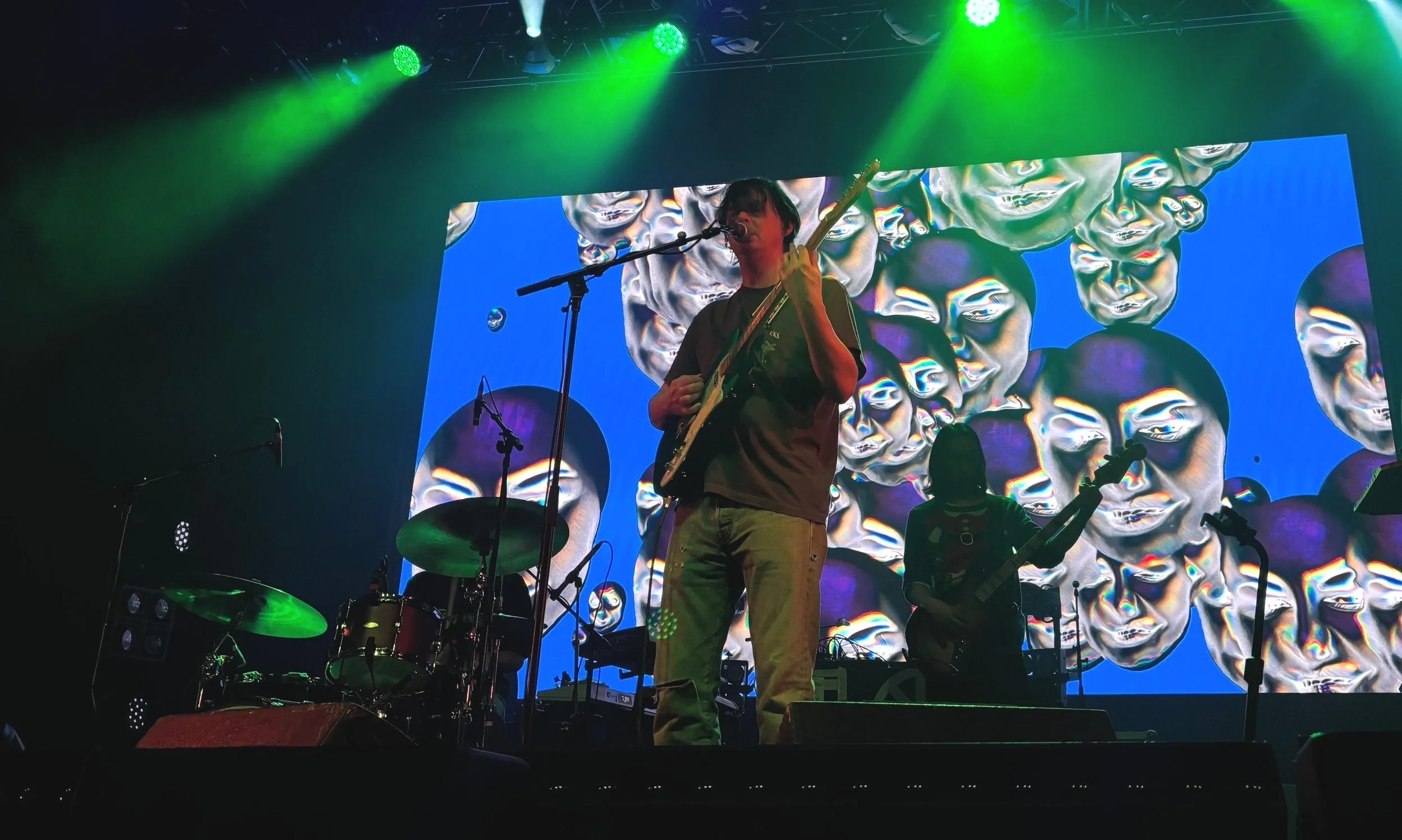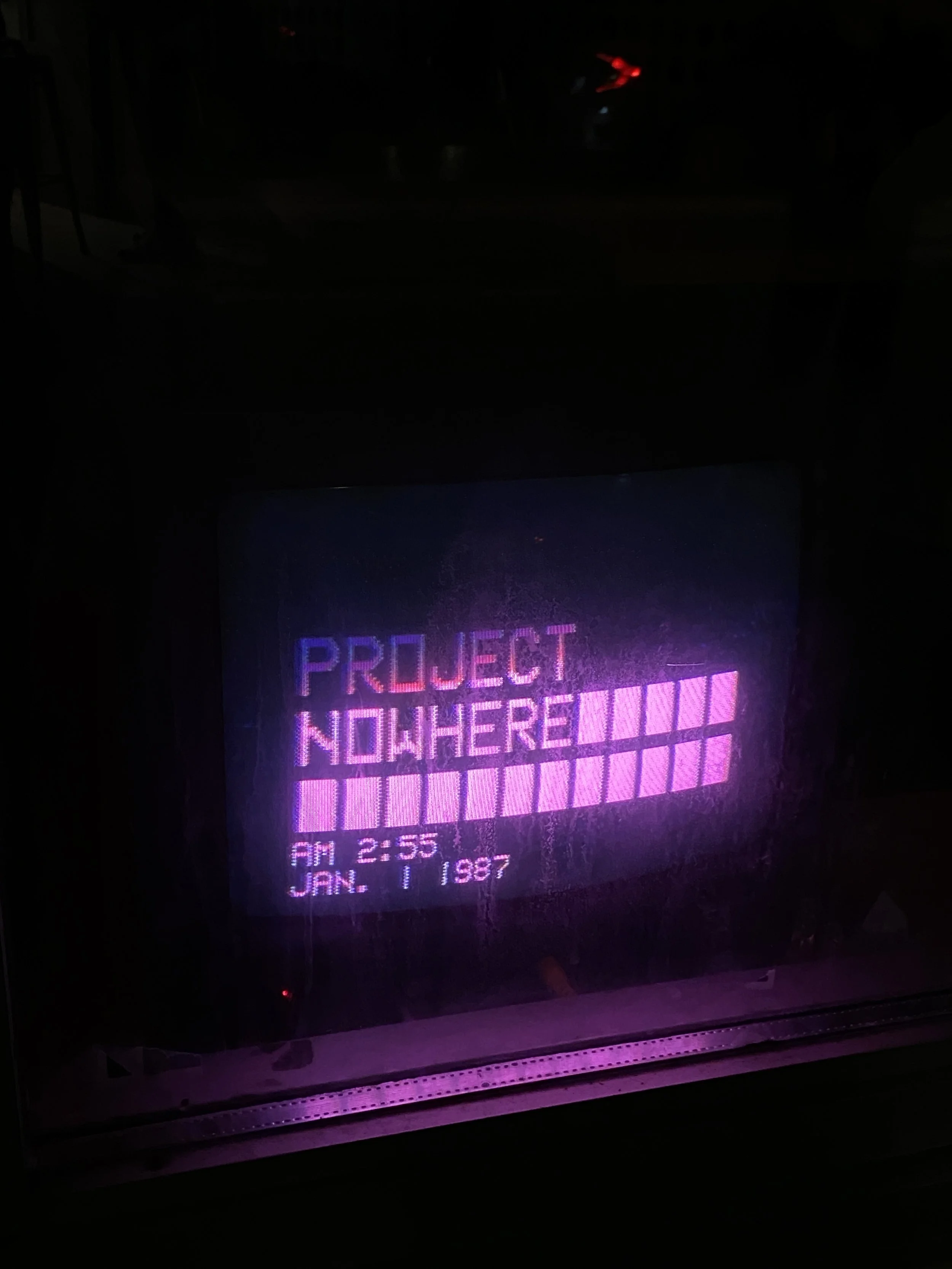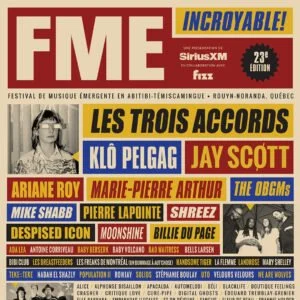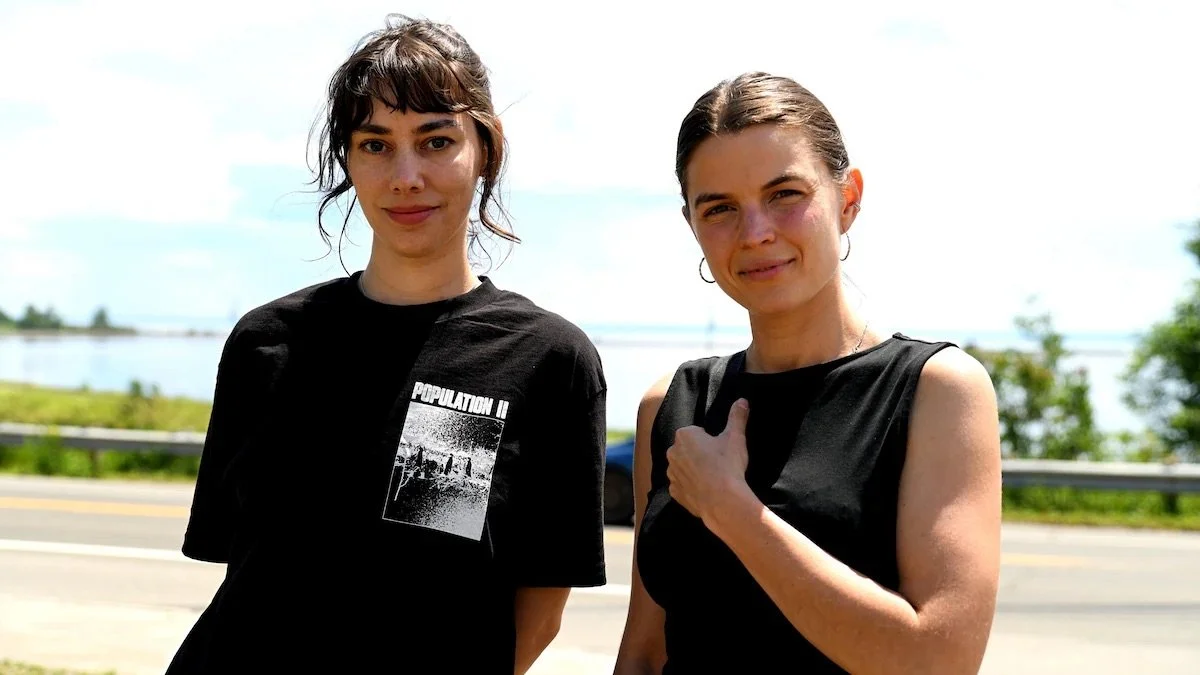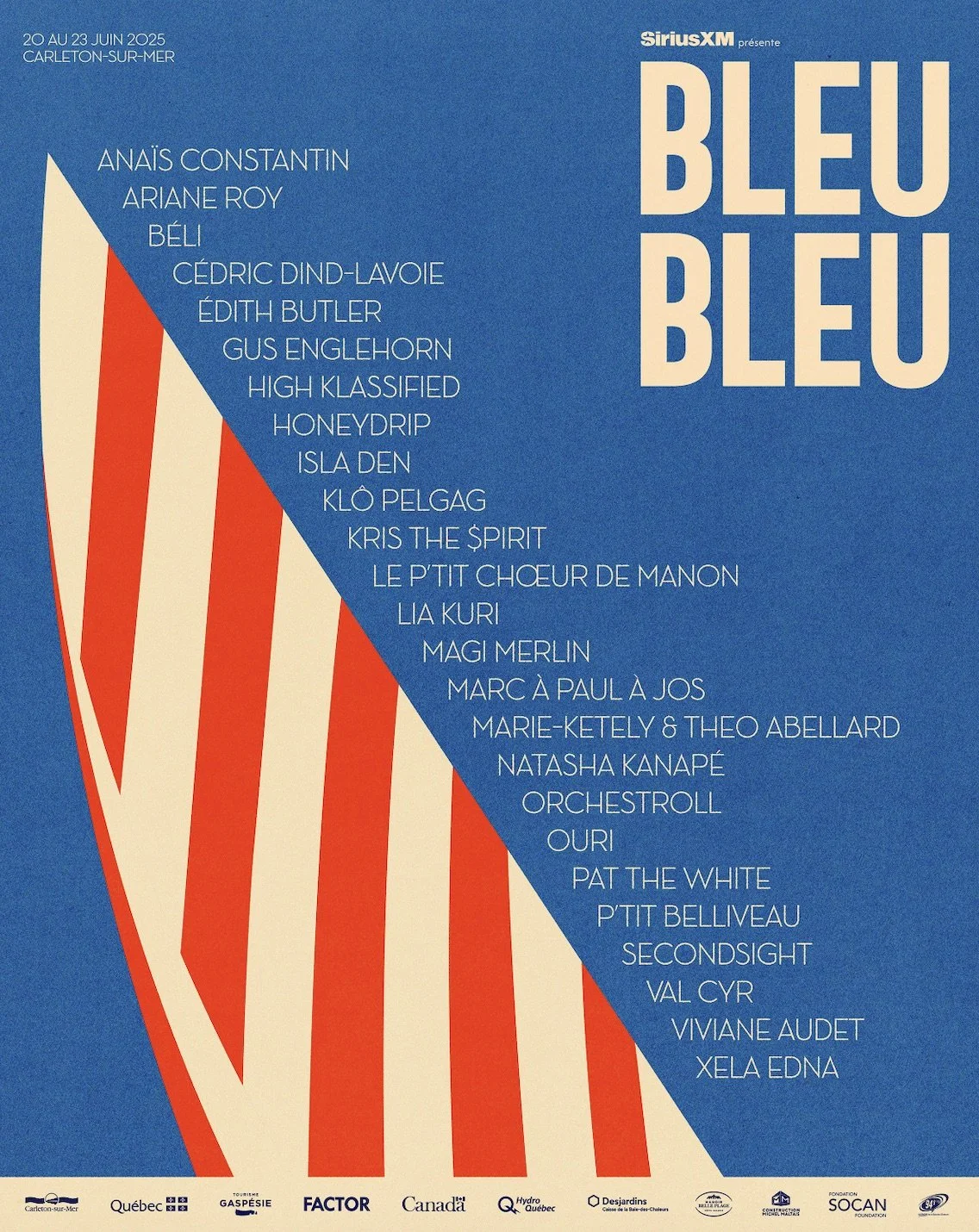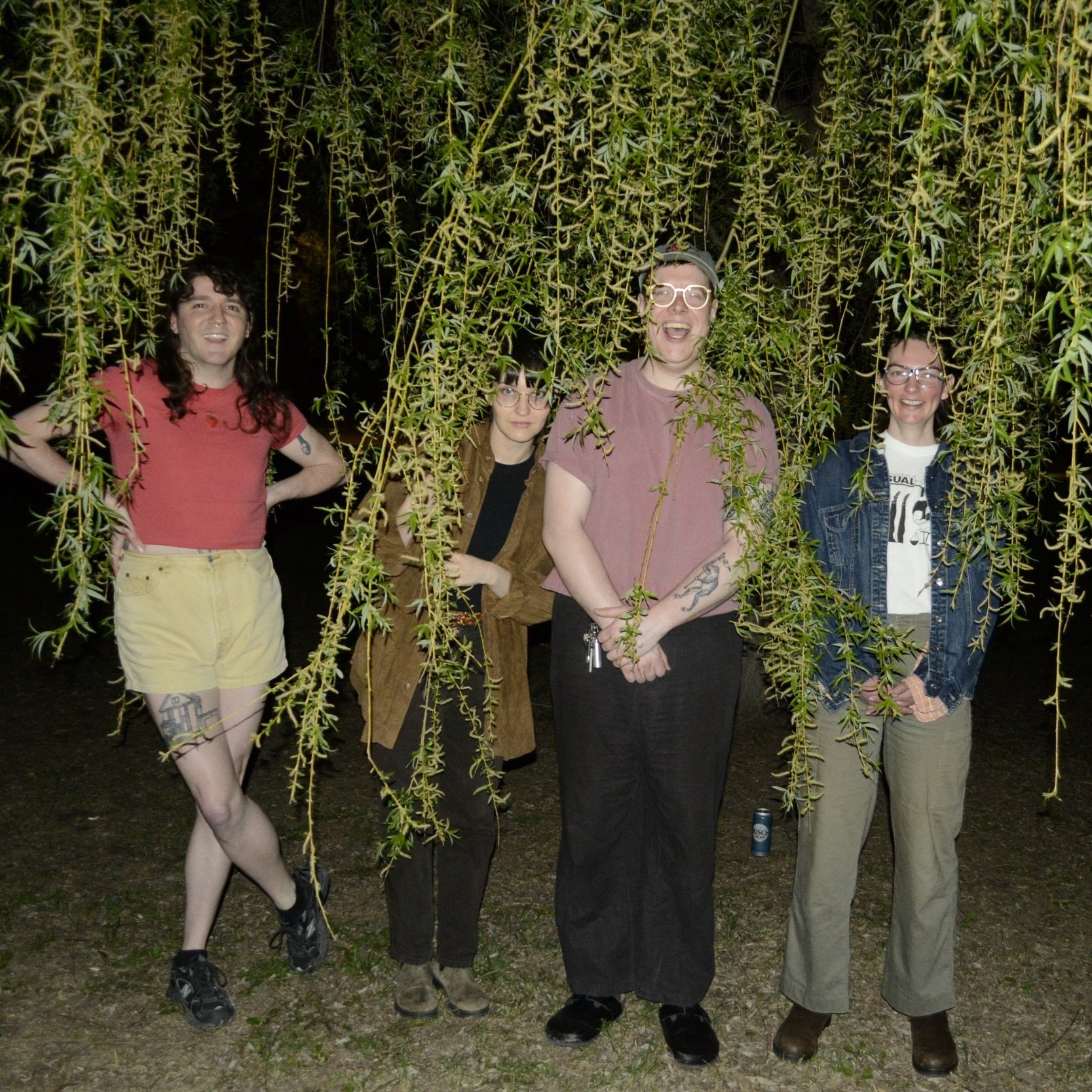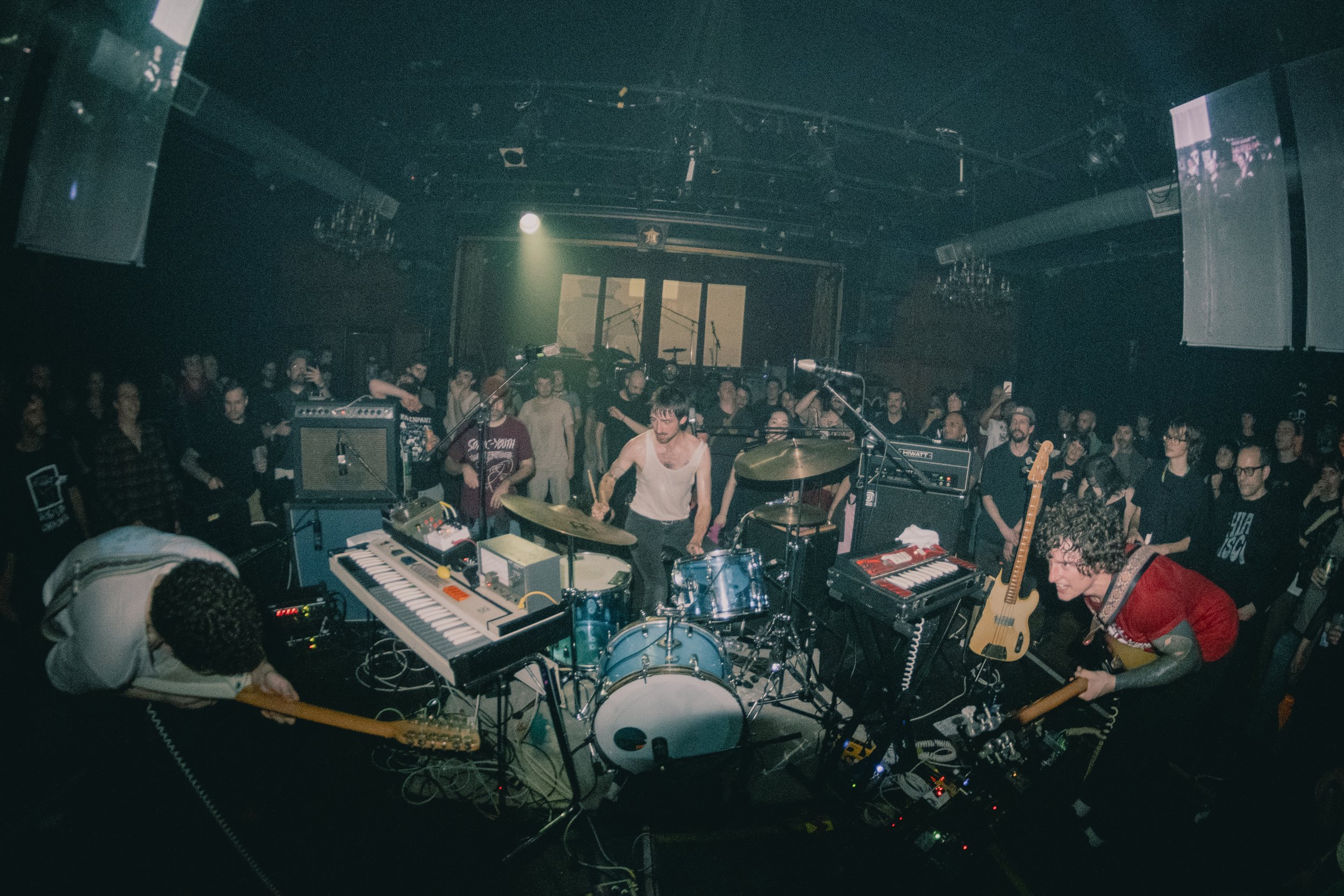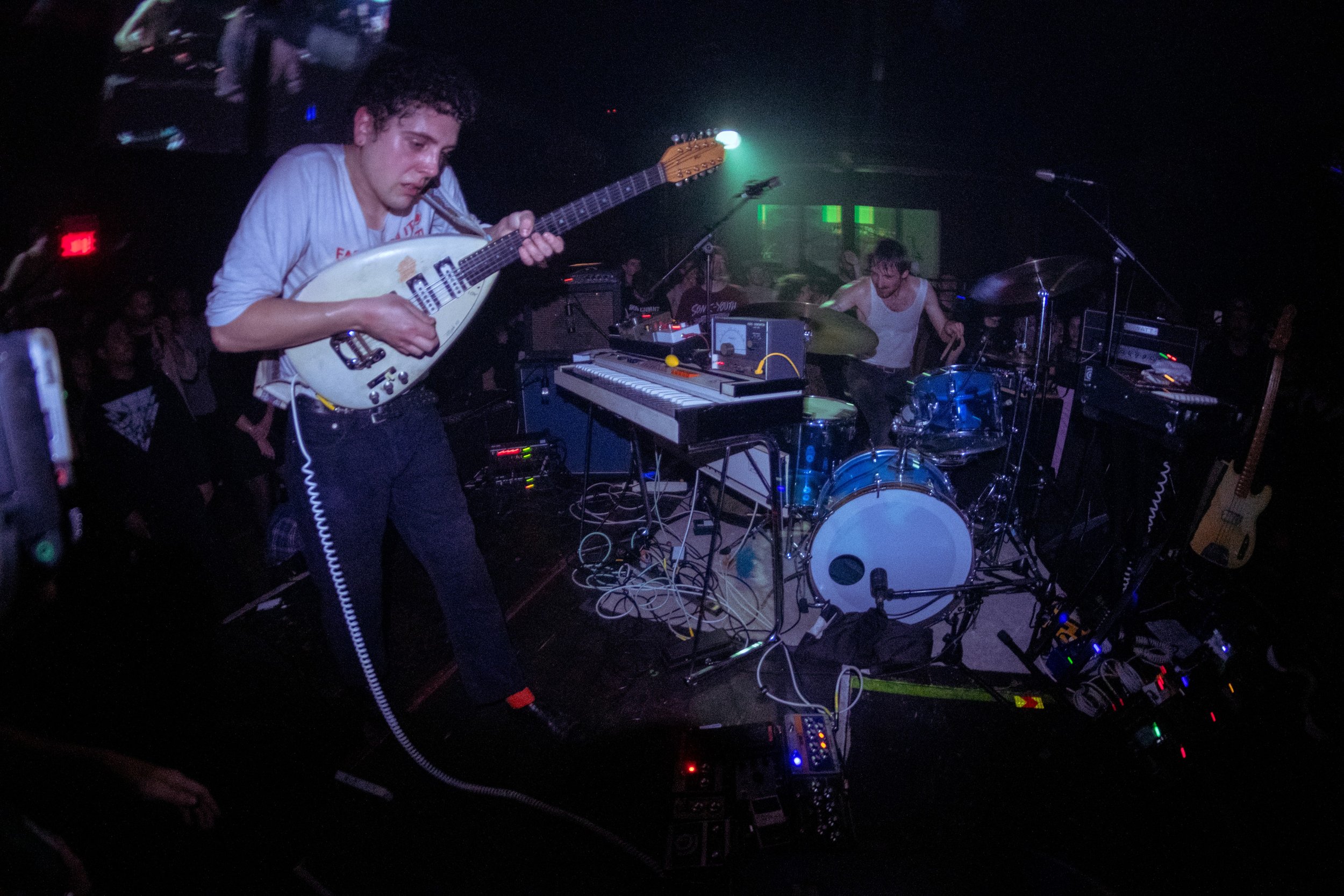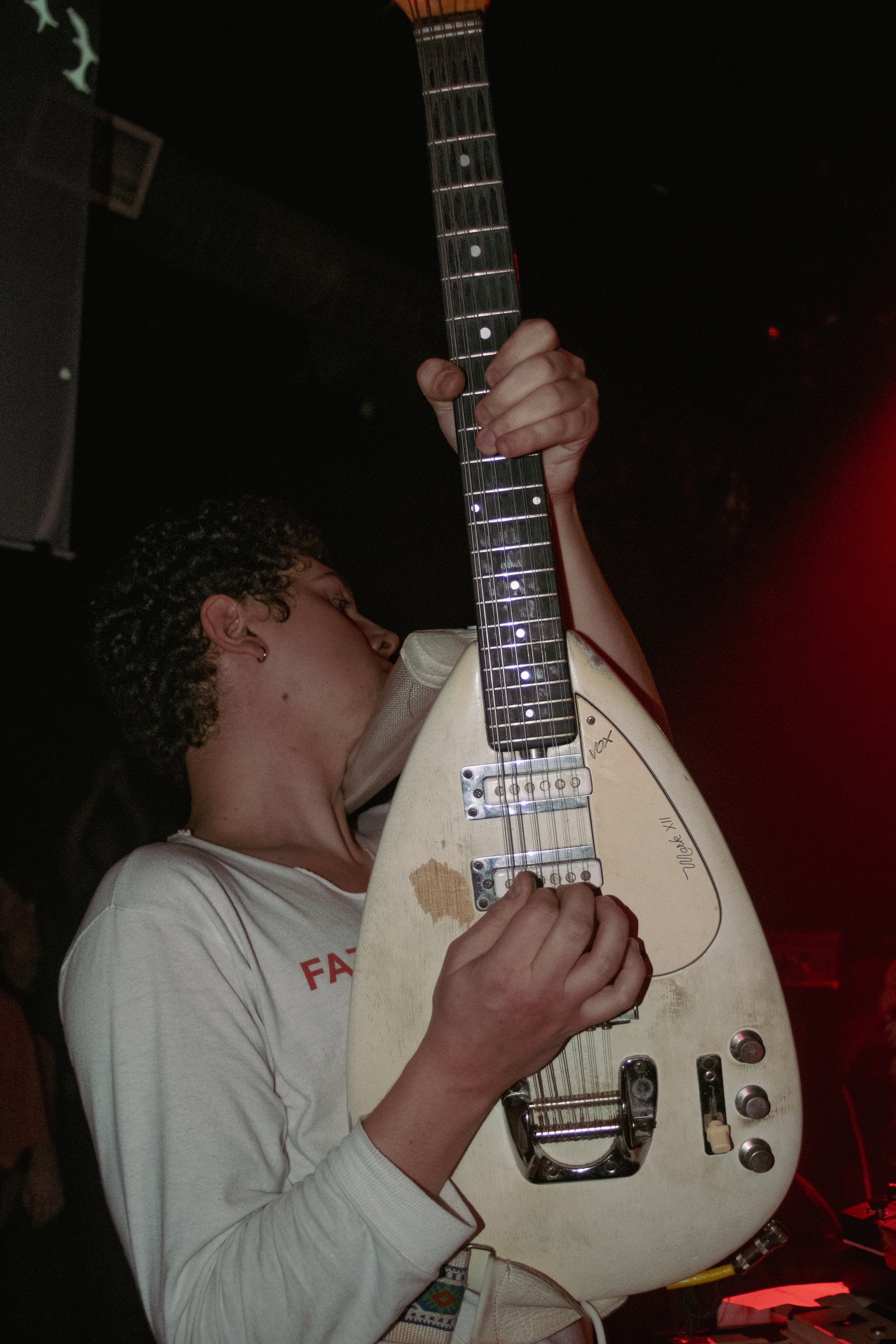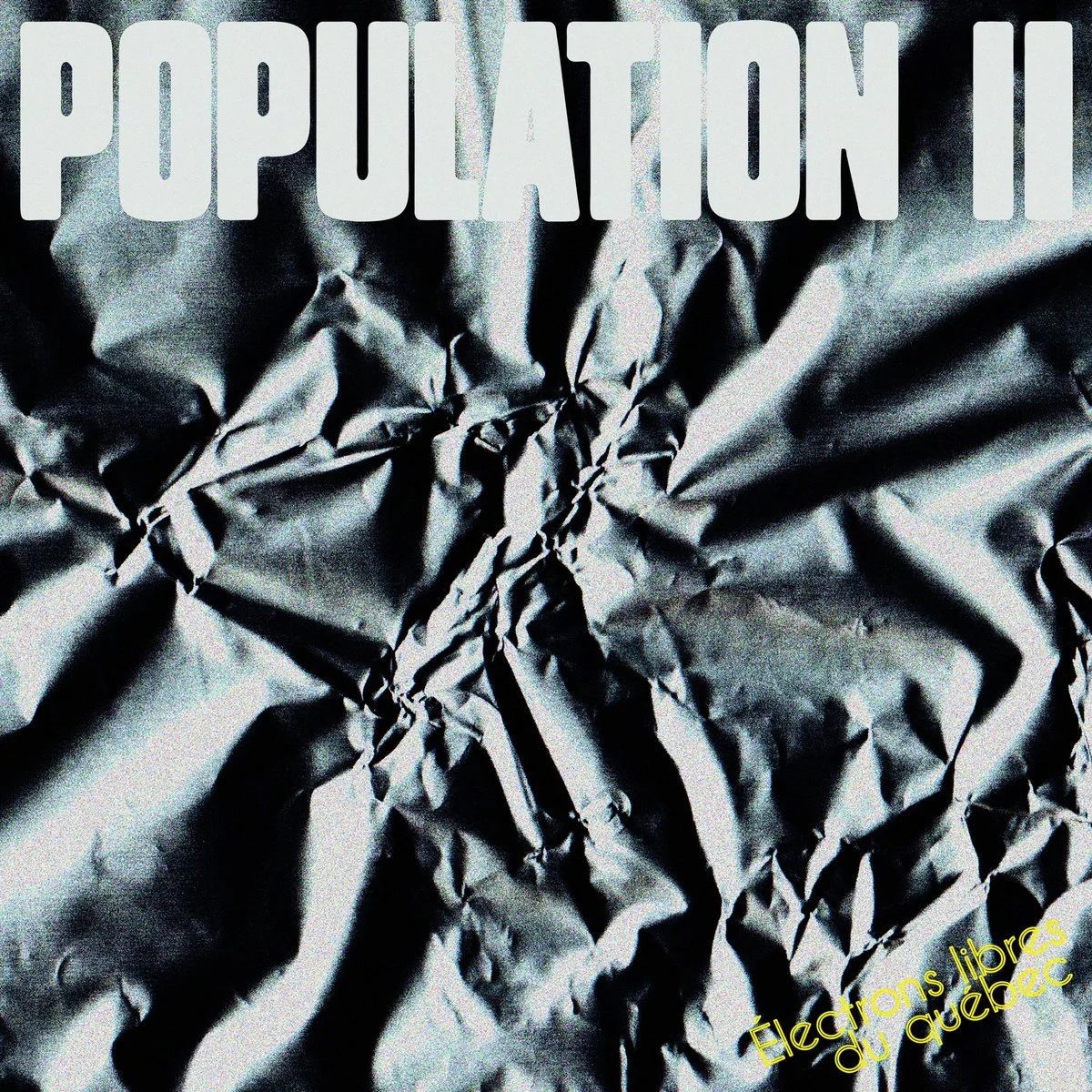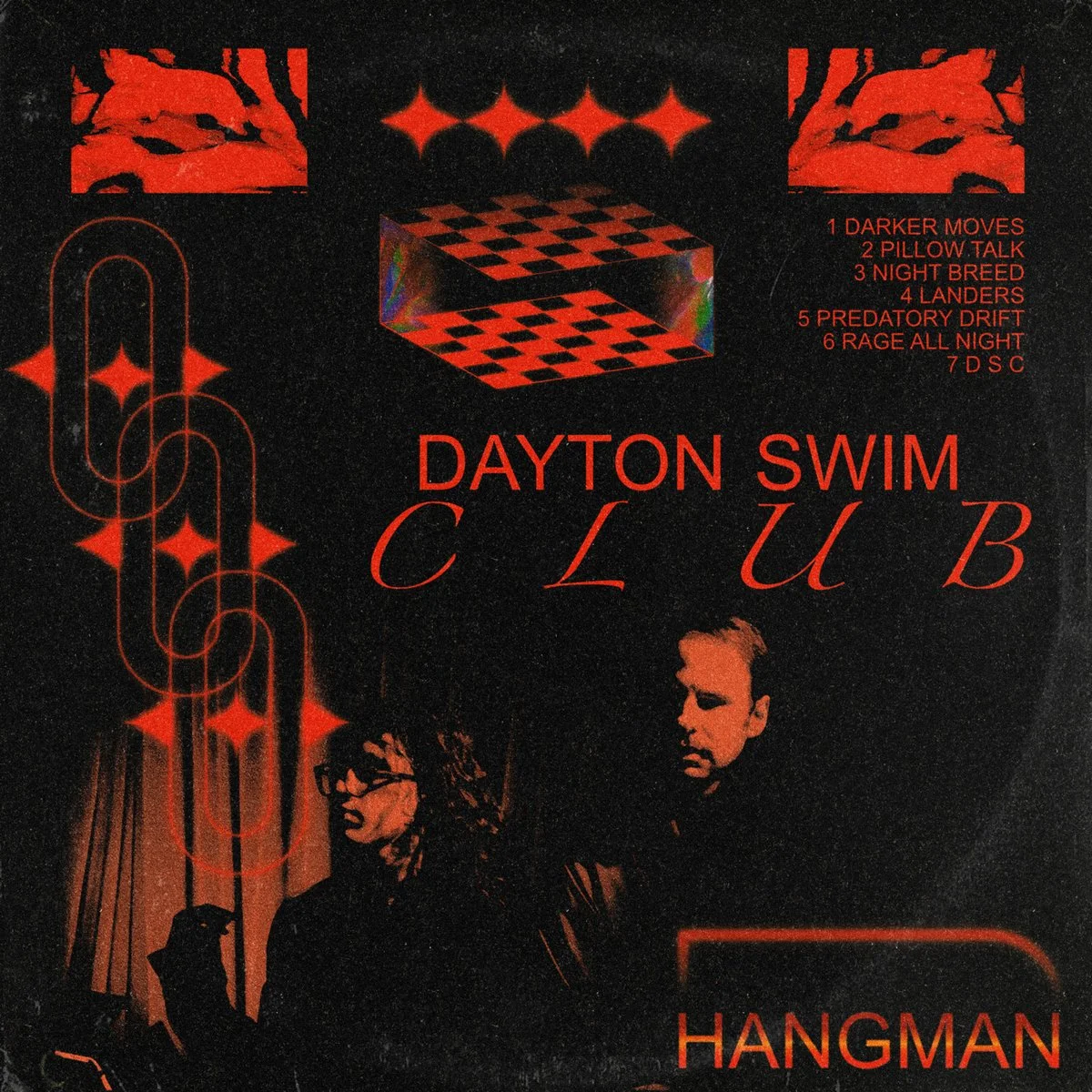Panda Bear, Toro y Moi, and Nourished by Time Set the Stage Aglow at MTELUS
Panda Bear at MTELUS, photo by Rebecca Judd
Tuesday brought a historic triple bill to MTELUS: psychedelic staples Panda Bear and Toro y Moi, backed by rising act Nourished by Time. As I huffed down Sainte-Catherine Street, my feet skating through the dreary sludge of Montreal winter, I pondered what I was about to see and just how it would collide. Hours later, I would make the same trek while lost in reverie, guarding the restorative energy of the evening close to my chest.
The evening began with Nourished by Time, the project of Baltimore’s Marcus Brown. The artist has garnered acclaim for their kaleidoscopic sound, fusing lo-fi pop, R&B, and countless other genres into their compositions. Shortly after 8 PM, Brown’s three-piece flocked to the stage, and it didn’t take long to get bodies shuffling. Brown is a fascinating performer; their fragmented contorsions and rich vocal timbre command your attention with ease. The standout from this set was easily “Daddy,” pulsating and raw in its emotion.
Nourished by Time at MTELUS, photo by Rebecca Judd
Once Nourished by Time had wrapped up, I peered behind me, where I was met with a predictable sea of rolled-up beanies and wire frames. The atmosphere in the room had intensified, and many fans could be heard speculating on the impending sets or gushing about their favourite albums.
Panda Bear (otherwise known as Noah Lennox) was next to emerge, and there was plenty to anticipate. His forthcoming album Sinister Grift (Domino) has been touted as a rock-forward revelation, sporting inputs from Cindy Lee, The Spirit of the Beehive’s Rivka Ravede, and—a Panda Bear first—the other members of Animal Collective. When Panda Bear and his backing band emerged, they did so modestly – with the exception of bassist Tim Koh’s comically-timed elf sweater. Before long, the venue was subdued by a jangly fog.
Panda Bear at MTELUS, photo by Rebecca Judd
Panda Bear deployed hallucinatory visuals throughout the show, which were crafted by longtime collaborator Danny Perez. Technicolour terriers, a swarth of chrome masks, and waves of jagged slate awakened the senses while looping with velocity. The band maintained a sharp, unbothered focus throughout the night, allowing these images to heighten the experience in whichever way (if at all) it made sense to the crowd.
But don’t be fooled, I was there for the sound – and what a cohesive sound it was. The Panda Bear setlist included dynamic selections from Sinister Grift along with reworked numbers from the artist’s colourful career. This current band arrangement meant that many of said numbers manifested with an alluring coarseness, such as my personal favourite “Slow Motion.” The new material was similarly engaging, “Ends Meet” dominating the pack with its soothing harmonies (padded by Ravede and Maria Reis) and its percussive clomp. Notably missing was “Defense,” the first single from Sinister Grift, which features a searing guitar solo from Cindy Lee. This was a strange decision, as it would have been warmly received at a Canadian tour stop, but there was still plenty to chew on.
Panda Bear has sustained ample comparison to Brian Wilson in his career, but his yelpy, agile inflections conjured images of Ezra Koenig. There were also pepperings of country in Lennox’s aggressive guitar work, which beckoned intrigue about the stories one would hear on Sinister Grift. Looking back at the crowd revealed furrowed brows and nodding heads, studiously absorbing Lennox’s every move.
Toro y Moi at MTELUS, photo by Rebecca Judd
At this point, MTELUS was ready for Toro y Moi. When Chaz Bear and his crew took to the stage, beaming with pride to be back in Montreal, they were greeted with fervour. The night picked up speed with songs like “Mirage” and “Laws of the Universe,” and Bear sank effortlessly into those vibrations. Making use of every inch of the stage, his charm was intoxicating – he embodies this delicate cheekiness that makes you feel as though you’re the only one on the floor. This furthered the sentiment behind songs like “Girl Like You,” which attendees emphatically shouted back at him.
Wrapped up in such emotion, you can imagine how puzzling it was to hear “Who likes picking up dog poo?”. Bear then tossed out a few handfuls of Toro y Moi-branded dog poop bags with a grin. “Pass some to the back,” he implored at one point, with many stuck on how that merch came about in the first place.
Toro y Moi at MTELUS, photo by Rebecca Judd
From there, the audience was swept away with a selection of tracks from Bear’s latest album Hole Erth (Dead Oceans). This release boasts a sharp emo-trap angle which has provoked dissent amongst the masses: while some view it as noble experimentation, others (particularly earlier fans) have struggled to savour the taste. I found that this crop of songs landed pretty well amongst the crowd; those who were trying to make sense of it were welcome to retire. Bear blissfully carried on, shining through numbers like the punk-tinged “Tuesday” – a track where Bear yearns for the sonic versatility that many refuse to embrace.
The front of the room may have held the most immersive Panda Bear experience, but I came to learn that the reverse was true for Toro’s fans. I shuffled to a staircase near the bar around “Ordinary Pleasure” and caught a vision of limbs waving back and forth to the disco force. Several attendees had assembled a full-fledged dance circle, their hips perfectly synchronized to the beat. There was refreshing connectivity amongst those who surrendered to the sound, unburdened by superiority. Bear closed the night off with a cover of his glittering Flume collab “The Difference” – a fitting reward for those whose hearts had been in it all along.

